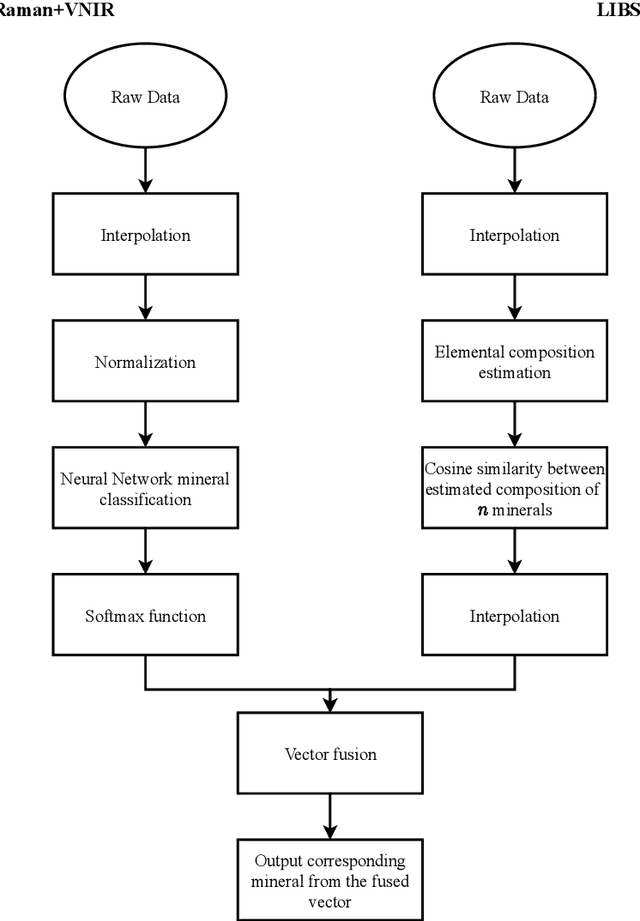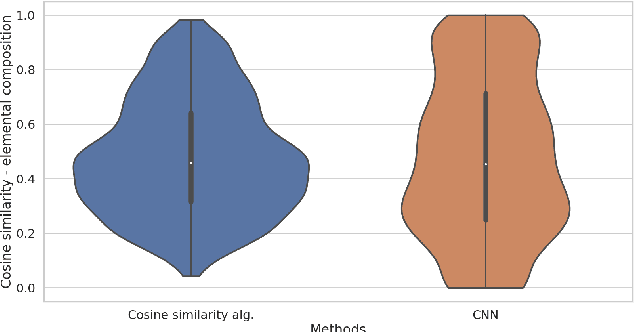Machine Learning for recognition of minerals from multispectral data
Paper and Code
May 28, 2020



Machine Learning (ML) has found several applications in spectroscopy, including being used to recognise minerals and estimate elemental composition. In this work, we present novel methods for automatic mineral identification based on combining data from different spectroscopic methods. We evaluate combining data from three spectroscopic methods: vibrational Raman scattering, reflective Visible-Near Infrared (VNIR), and Laser-Induced Breakdown Spectroscopy (LIBS). These methods were paired into Raman + VNIR, Raman + LIBS and VNIR + LIBS, and different methods of data fusion applied to each pair to classify minerals. The methods presented here are shown to outperform the use of a single data source by a significant margin. Additionally, we present a Deep Learning algorithm for mineral classification from Raman spectra that outperforms previous state-of-the-art methods. Our approach was tested on various open access experimental Raman (RRUFF) and VNIR (USGS, Relab, ECOSTRESS), as well as synthetic LIBS NIST spectral libraries. Our cross-validation tests show that multi-method spectroscopy paired with ML paves the way towards rapid and accurate characterization of rocks and minerals.
 Add to Chrome
Add to Chrome Add to Firefox
Add to Firefox Add to Edge
Add to Edge